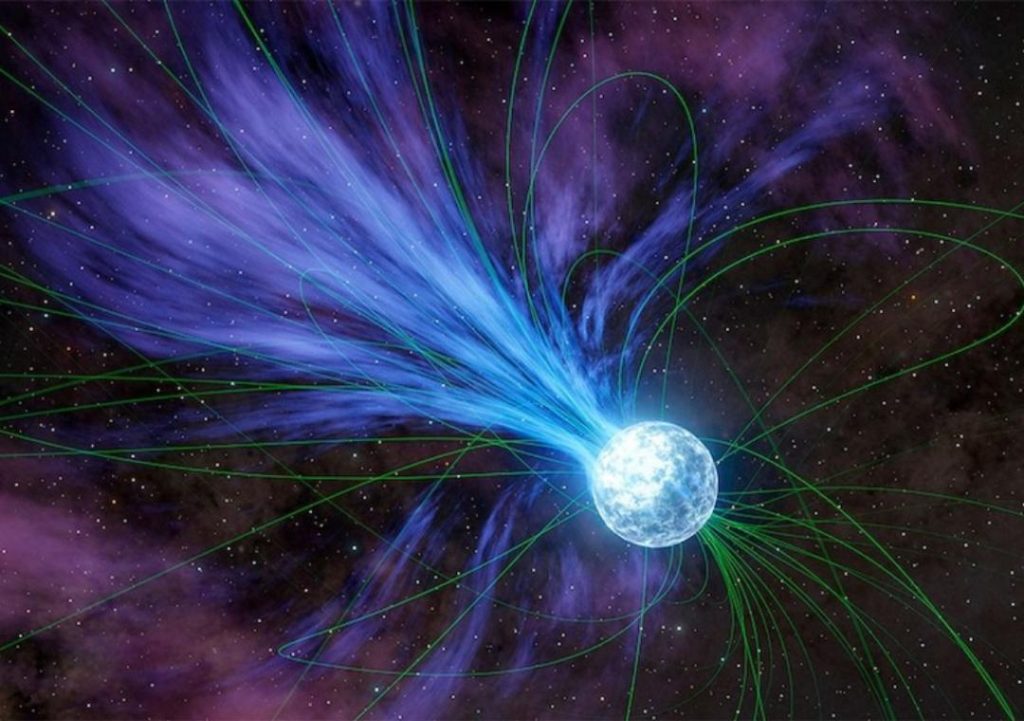
Gold & Platinum Created through Neutron Stars’ Explosions: Study
For centuries, humans have been fascinated by the origins of precious metals like gold and platinum. While we’ve long known that these metals are found on Earth, their exact origin has remained a mystery. However, a groundbreaking study led by Columbia University student Anirudh Patel has finally shed light on the cosmic event that gave rise to these valuable elements.
According to the study, magnetars – or highly magnetized neutron stars – played a crucial role in the creation of gold and platinum. These incredible cosmic events occurred approximately 20 years ago and have since been studied by scientists to understand the process of element formation.
Magnetars: The Cosmic Factories
Neutron stars are incredibly dense objects that are formed when massive stars collapse under their own gravity. These stars are so dense that a sugar-cube-sized amount of their material would weigh about as much as a mountain. Magnetars, on the other hand, are a type of neutron star that has an extremely strong magnetic field. This magnetic field is so powerful that it’s capable of generating intense flares that can be detected from millions of light-years away.
In the study, Patel and his team focused on the explosion of a magnetar that occurred in the distant galaxy NGC 253. This explosion was part of a rare cosmic event known as a magnetar flare, which occurs when a magnetar’s magnetic field becomes unstable and releases a massive amount of energy. These flares are incredibly powerful and can be seen from millions of light-years away.
The Formation of Gold and Platinum
So, how did gold and platinum come to be created through these cosmic events? According to the study, the explosion of the magnetar released a massive amount of energy that ionized the surrounding material, creating a plasma of charged particles. This plasma then interacted with the intense magnetic field of the magnetar, causing the ions to collide and merge, forming heavier elements like gold and platinum.
This process, known as nucleosynthesis, is a complex and energy-intensive process that requires the extreme conditions found in the explosion of a magnetar. The resulting elements are then dispersed throughout the galaxy, where they can be incorporated into new stars, planets, and even the Earth.
Frequency of Magnetar Flares
But how often do these incredible events occur? According to Patel and his team, magnetar flares happen approximately once per decade in the Milky Way galaxy. This means that there are only a handful of these events that occur in our galaxy each year. However, when we look at the observable universe, the frequency of magnetar flares increases significantly, occurring annually across the cosmos.
This means that the creation of gold and platinum through magnetar explosions is a relatively rare event, but one that has likely occurred countless times throughout the history of the universe.
The Significance of the Study
The study led by Patel and his team is a significant breakthrough in our understanding of the origins of precious metals like gold and platinum. It provides strong evidence that these elements were created through the explosion of magnetars, rather than through more traditional methods like the Big Bang.
The study also highlights the incredible complexity and beauty of the universe. From the explosion of magnetars to the formation of elements, the cosmos is a constantly evolving and dynamic system that is still full of mysteries waiting to be uncovered.
Conclusion
In conclusion, the study led by Anirudh Patel has shed new light on the origins of precious metals like gold and platinum. Through the explosion of magnetars, these elements were created in a cosmic event that occurred approximately 20 years ago. The frequency of these events may be rare, but they are a reminder of the incredible complexity and beauty of the universe. As scientists continue to study the cosmos, we may uncover even more secrets about the origins of the elements that make up our world.
Source:






